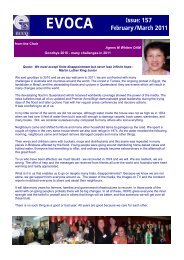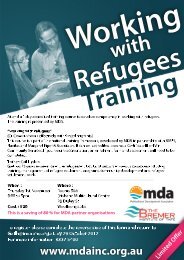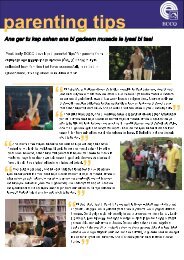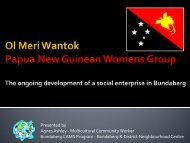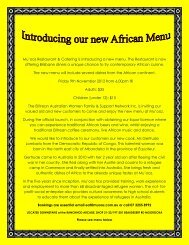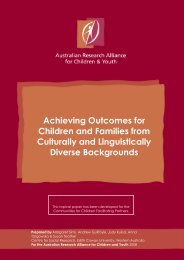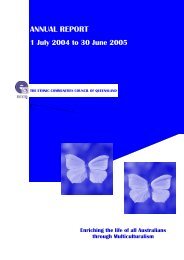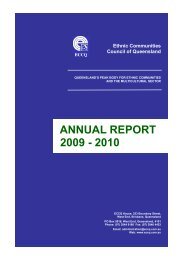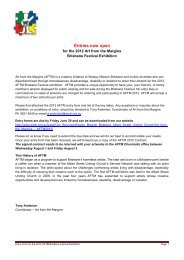Good Practice Guide
CALD Good practice guide
CALD Good practice guide
You also want an ePaper? Increase the reach of your titles
YUMPU automatically turns print PDFs into web optimized ePapers that Google loves.
GOOD PRACTICE GUIDE<br />
2. APPROACH INFORMING THIS GUIDE<br />
There are many approaches<br />
that have been used in ongoing<br />
efforts to ensure relevant,<br />
appropriate and high quality<br />
services to all.<br />
One approach includes<br />
increasing the cultural<br />
sensitivity of staff. However,<br />
it is becoming clear that cross<br />
cultural sensitivity is only one<br />
component of a set of skills<br />
needed to achieve quality<br />
service delivery to children,<br />
young people and families<br />
from diverse cultural and<br />
linguistic backgrounds.<br />
As such, cross cultural competence is being<br />
increasingly applied by human services.<br />
The difference is an important one to<br />
understand:<br />
• Sensitivity: refers to being open<br />
and empathic towards a particular<br />
group's issues and concerns<br />
• Competency: includes sensitivity,<br />
knowledge, skills, actions and<br />
awareness of one’s own biases.<br />
Accordingly, the following principles<br />
inform the approach:<br />
• cross cultural competence is not<br />
additional, but integral to the core<br />
skill sets required of staff to work<br />
effectively with clients from culturally<br />
and linguistically diverse backgrounds<br />
• whilst all children, young people and<br />
families are characterised by diverse<br />
needs, backgrounds and experience,<br />
these are more pronounced for those<br />
from culturally and linguistically<br />
diverse backgrounds, and thereby<br />
require specific strategies to ensure<br />
appropriate and equitable outcomes<br />
• cross cultural competency requires<br />
a recognition that cultural<br />
considerations influence all levels<br />
of the client-provider encounter<br />
including the assessment, case work<br />
practice, communication process,<br />
and service utilisation<br />
• cultures are not static but dynamic<br />
and evolving<br />
• self awareness and the examination<br />
of one's own cultural identity and<br />
values that operate both at the<br />
conscious and unconscious levels<br />
is critical<br />
• there is a need to recognise that<br />
differences in language, age, culture,<br />
socio-economic status, political and<br />
religious beliefs, sexual orientation,<br />
and life experience add challenging<br />
dimensions to the dynamics of cross<br />
cultural interactions<br />
• issues of power and privilege are<br />
legitimate aspects of understanding<br />
and responding appropriately to<br />
others across cultural boundaries<br />
• cross cultural competence is not<br />
a fixed set of skills that can be<br />
obtained or mastered. Instead,<br />
developing cross cultural competence<br />
is an ongoing process that involves<br />
lifelong learning<br />
• change is both an individual process<br />
and an organisational/systems<br />
process. Strategies for enhancing<br />
individual competence must take<br />
place in concert with efforts to<br />
modify policies and programs.<br />
3



